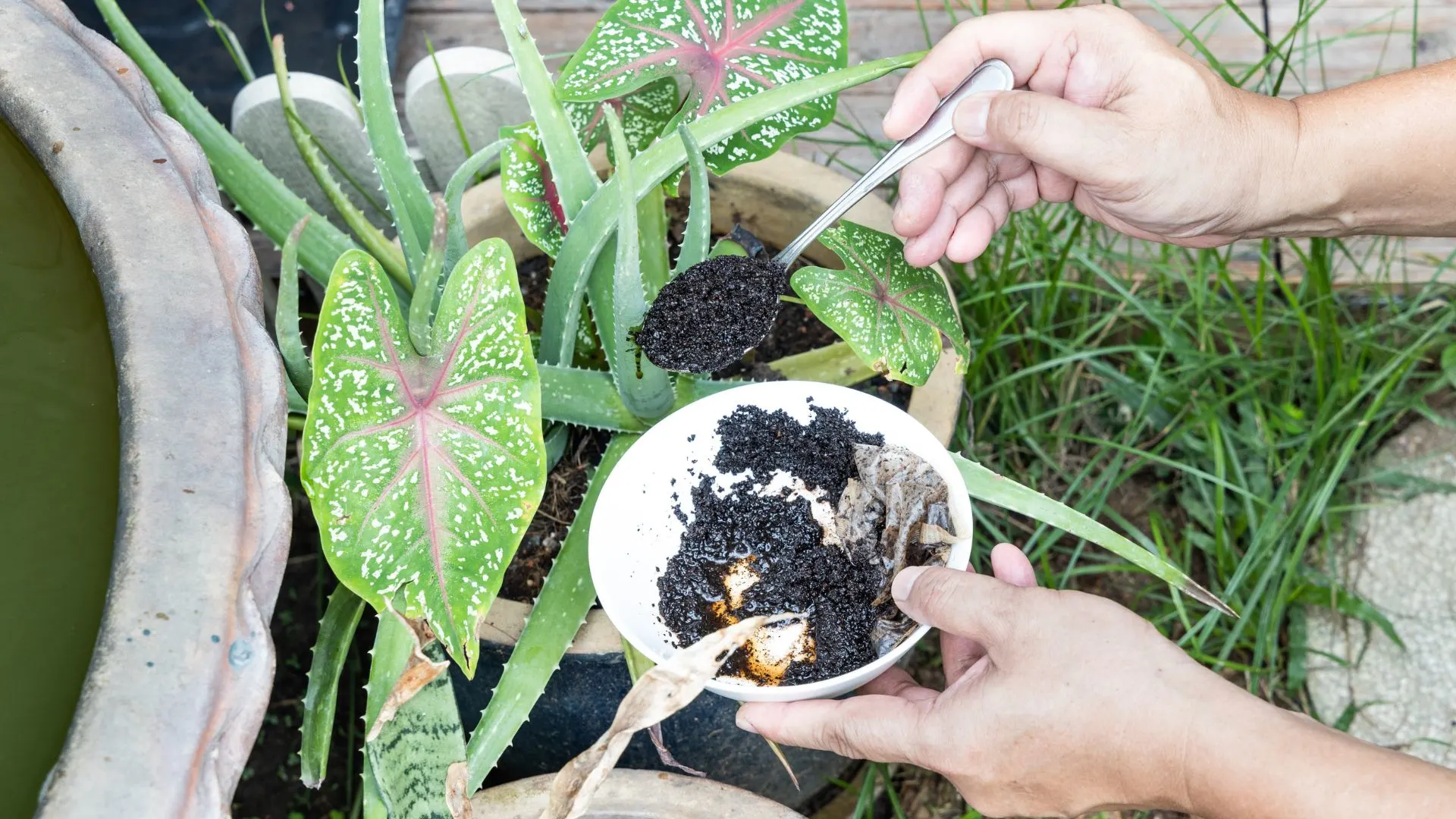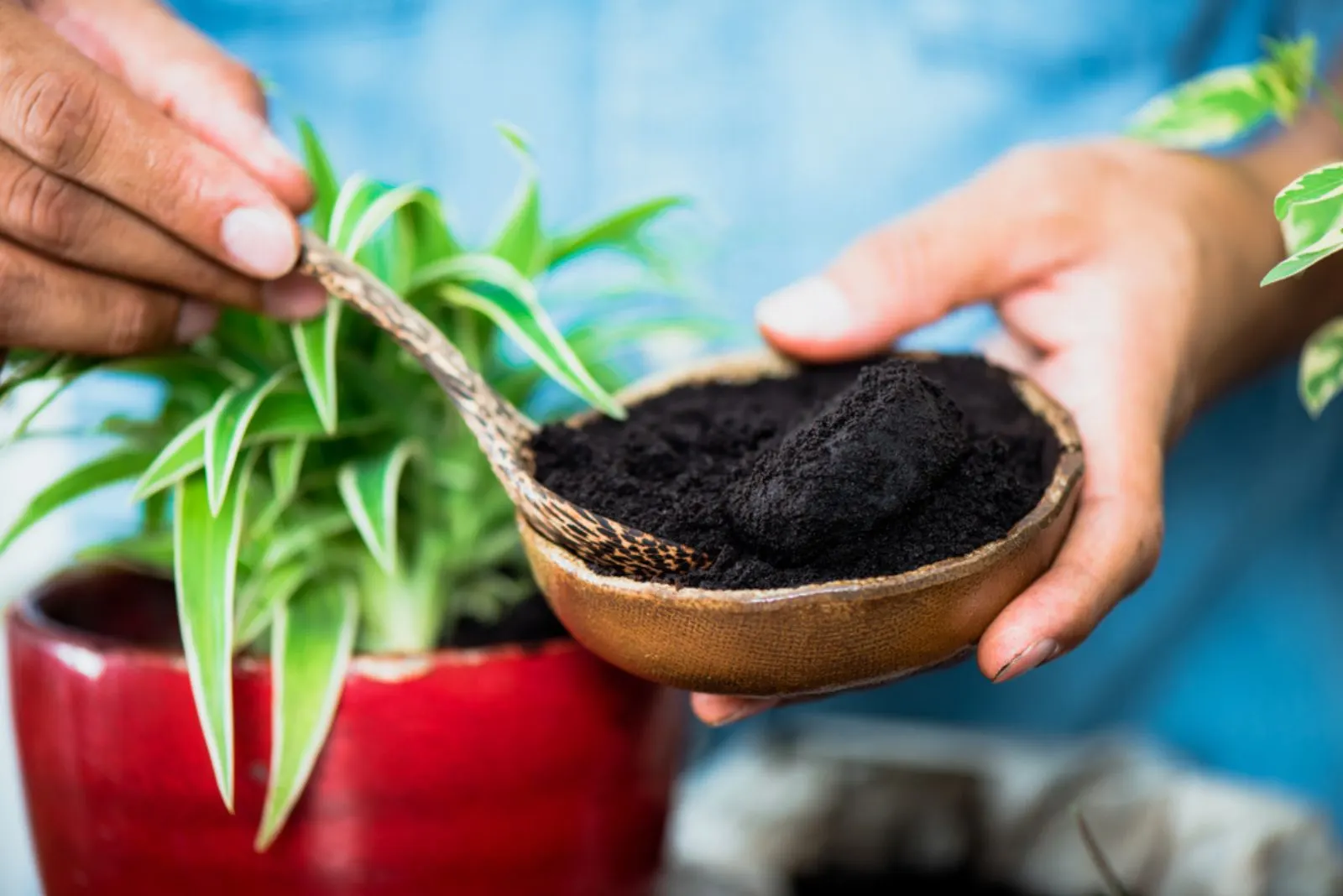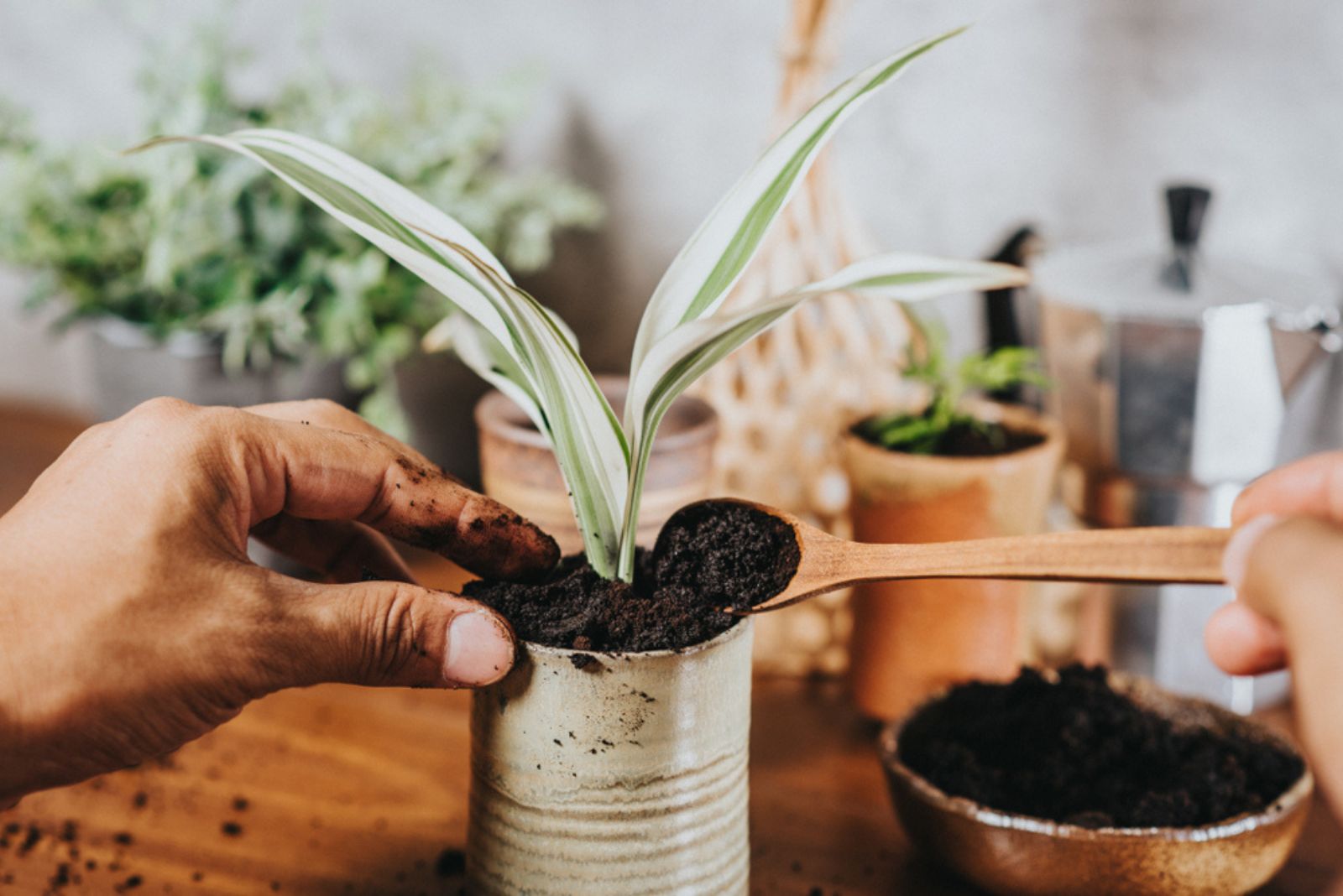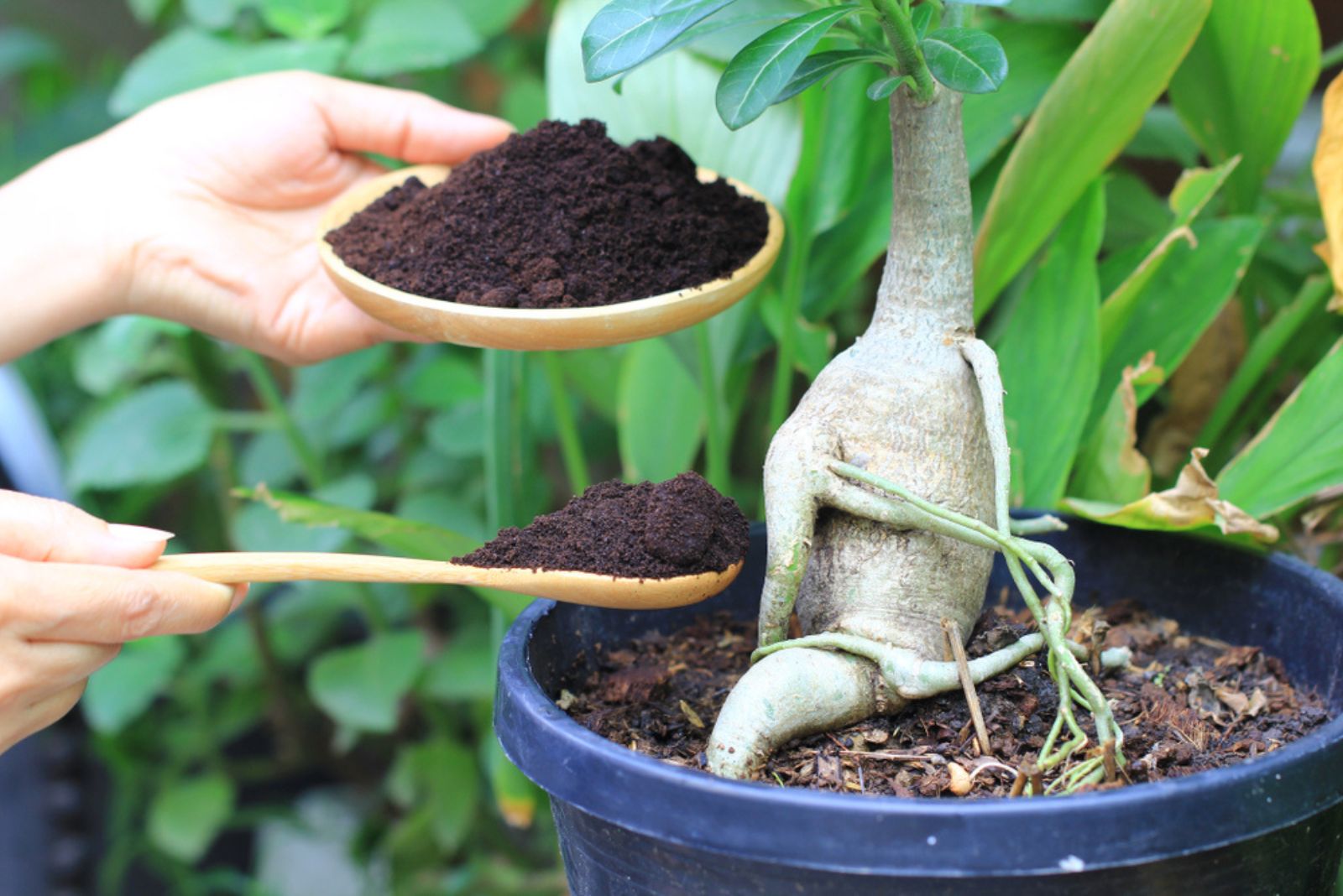Do you like coffee and growing plants? I’m sure you’ve heard that you can use coffee grounds in plants, but I have to warn you that there’s more to it than meets the eye.
A few questions should be answered regarding the benefits of coffee grounds, the application steps, and which plants to use them on.
Let’s discuss everything in detail!
Why Use Coffee Grounds In Plants?
You’ll find a lot of information on using different types of food waste on plants. But what’s so special about coffee grounds and why is everyone talking about them?
Well, the reason might be that we’re now spending more time at home and prefer drinking our coffee there. We’re left with coffee waste, so why not use it if possible?
The essential thing to understand is that this type of food waste contains beneficial nutrients, precisely nitrogen and potassium.
Plants need these nutrients to survive, which is the main reason why we find them in commercial fertilizers. Coffee grounds can also help the soil retain moisture, prevent weed growth, and repel pests.
Which Coffee Grounds To Use In Plants
You’ll hear many different opinions and experiences regarding coffee grounds and their use as a soil amendment. Some growers claim that this food waste simply doesn’t work on their plants, while others have excellent results. Why is that so?
Well, it’s actually because of the way we utilize them – either fresh or used. Fresh coffee grounds you haven’t used to make coffee yet are too acidic and won’t work on plants or could even damage them.
It’s true that some plants thrive in acidic soils but this simply isn’t a way to go.
Used coffee grounds, on the other hand, aren’t as acidic, and therefore are a better choice. They lose acidity during the coffee making process.
I’m sure you’re wondering if the making process affects beneficial nutrients. Luckily, the amount of nutrients stays the same after the process.
Which Plants Like Coffee Grounds And Which Don’t?
So, you can use coffee grounds in houseplants, but not in every species and the same applies to plants in outdoor gardens.
Here’s a list of plants that will benefit from coffee grounds as a soil amendment that will help in moisture retention.
• Calla
• Crinum
• Roses
• Bugbane
• Iris
• Hibiscus
• Forget-me-not
• Marigolds
You should know that using coffee grounds as the only fertilizer isn’t a good idea. For instance, roses will benefit from coffee grounds but it won’t be enough so you’ll need to supplement the soil with more nutrients.
It’s always better to start with smaller quantities and check how your plants react.
Here are some plants that don’t respond well to coffee grounds in their soil. These plants thrive in dry soil types and too much moisture will do more harm than good.
• Lavender
• Spider plant
• Orchid
• Succulents and cactuses
• Yucca
• Sago palm
• Tomatoes
• Black-eyed Susan
How To Use Coffee Grounds
One thing is left to discuss: the application process. Coffee grounds will be the most effective if mixed into a compost pile and then applied to the soil in small quantities.
The second method is to make a solution by mixing one tsp of coffee grounds in a gallon of water. Stir it with a spoon until it’s fully diluted and repeat the process for a few nights.
Take a cheesecloth and strain the mixture to remove any remnants. Always apply small doses of this fertilizer to see how your plant reacts.
In Mulch
As mentioned, coffee grounds can be added to mulch and help the soil retain moisture. This is an excellent option for those who live in warm climates.
The great thing is that you can use coffee grounds to repel rabbits or slugs by simply adding them to mulch. (1) Only those who have had issues with these little critters know how hard it is to get rid of them. Now you have a chemical-free pest repellent!
Some cat owners claim their furry friends stay out of the garden if you use coffee grounds. There is no scientific evidence for it, but I guess it’s worth trying. As long as it doesn’t harm my cat, I’ll use it because my dear friend can’t keep its paws off my baby plants!
What Is The Best Time To Apply Coffee Grounds?
The last question we must answer is related to the time you apply coffee grounds as a fertilizer.
Generally speaking, we apply fertilizers when our plants are in their active growth stage. This typically occurs during spring and summer, so apply coffee grounds during these seasons.
During winter months our plants are either dormant or semi-dormant and they do not use nutrients since they don’t display new growth during this period.
Fertilizers, including coffee grounds, may inhibit the natural process that occurs in dormant and semi-dormant plants and you may face unnecessary issues.
So, yes or no to coffee grounds? One thing is certain, they do have benefits and will have a positive effect if applied accordingly and on the right plants. You can improve your plant health with this free and eco-friendly product!
References
1. Hollingsworth, Robert & Armstrong, John & Campbell, Earl. (2002). Pest Control: Caffeine as a repellent for slugs and snails. Nature.




